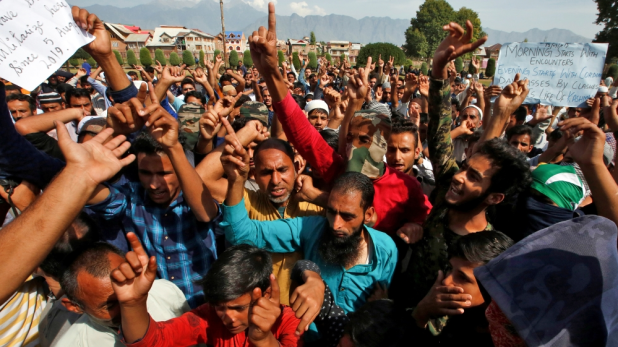A report released by Al Jazeera TV has belied the Modi-led Indian government’s justification for revocation of Jammu and Kashmir’s special status in 2019 that the move would wipe out armed resistance in the disputed territory of Jammu and Kashmir by saying that after three years, the same Bharatiya Janata Party (BJP) government is “reviv-ing a civilian militia, called the Village Defence Guards (VDGs)”.
The Al Jazeera report ridiculed the BJP government’s rhetoric and said, “Three years later, the same government is reviving a civilian militia, called the Village Defence Guards (VDGs), in the region’s southern Jammu area”.
First established in 1995 in the districts of Jammu area, the VDGs (then known as Village Defence Committees) were tasked with targeting pro-freedom people in IIOJK.
“Demands to disband the civil militia grew in the early 2000,” the report said and added that since 2019, the VDGs have been formed along the lines of Salwa Judum, a notorious militia group created at the turn of the century in the central Indian state of Chhattisgarh, where the Maoists led a resistance movement of the Indigenous people resisting a corporate takeover of their lands and resources.
In 2011, India’s Supreme Court declared the deployment of tribal youths for the Salwa Judum or any other militia aimed at fighting the Maoists as unconstitutional and ordered an immediate disarming of the militia.
The report said, “Since January, hundreds of civilians from Dhangri and other villages around Jammu are being trained and armed by the Central Reserve Police Force (CRPF) paramilitary group.”
“We presently have more than 150 VDG members active in the village,” Dhangri’s village head Dheeraj Sharma told Al Jazeera.
A VDG member is paid a monthly remuneration of 4,000-4,500 rupees ($48-$54).
Muhammad Aslam Chowdhary, a senior police official in Rajouri, told Al Jazeera that 700 VDG members have been sanctioned in Rajouri. He said while some have been given self-loading rifles (SLRs), a majority have Lee–Enfield rifles, commonly known as 303 – a bolt action, magazine-fed rifle invented in the late 19th century.
Chowdhary said the VDGs will operate under police supervision.
“They are defence groups and they have to do patrolling at nights…. They will also help in search operations. They will also remain vigilant and there are WhatsApp groups where they will provide information,” he said.
But not everyone in the region has welcomed the move to arm the civilians, with many politicians and experts fearing it could spark religious tensions.
Shafiq Mir, a politician in Rajouri, said the weapons could be misused by people to settle personal scores as had happened in the past.
“Our concern is that weapons should not be given to civilians in this way. The neighbours of these VDG members who are from other communities are not feeling secure. Even when there are small issues in the locality, they will not feel safe as the guns could be misused,” Mir told Al Jazeera.
Mir’s fears are not unfounded. The civil militias in the 1990s were accused of many criminal activities, including murders and rapes.
Official data shows at least 221 cases were registered against the members of the VDGs in the 1990s. Nearly two dozen of these cases were related to murder, seven to rape, and 15 cases involved rioting, the report concluded.—KMS










